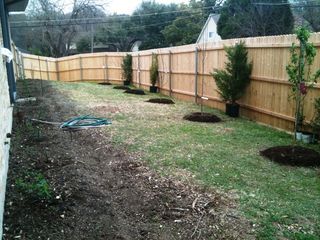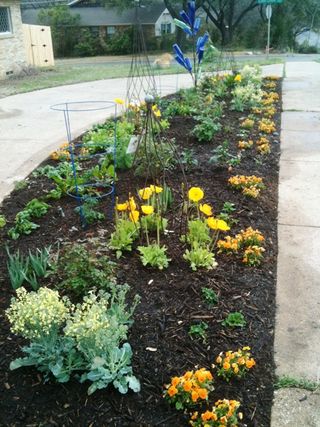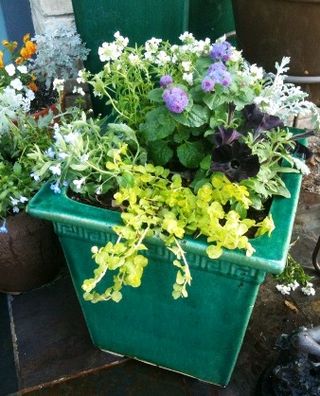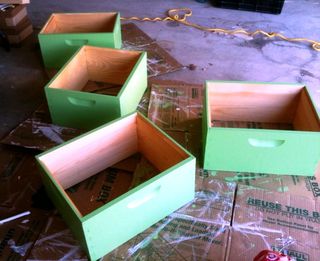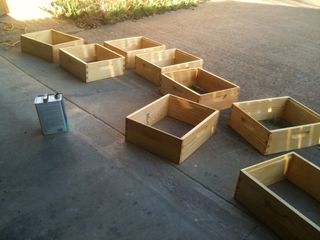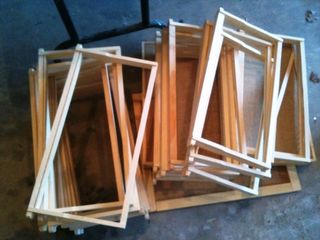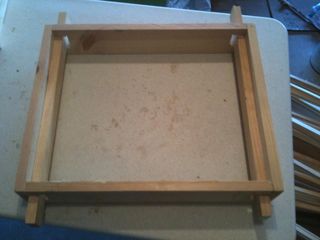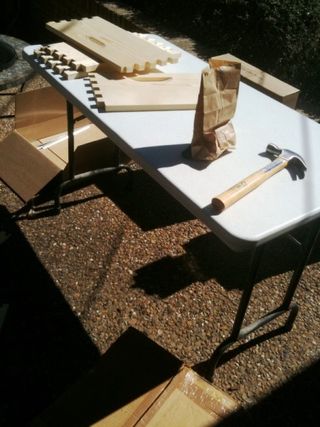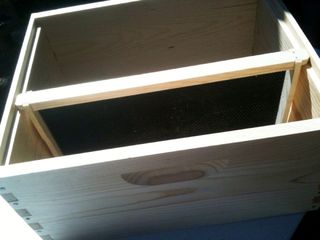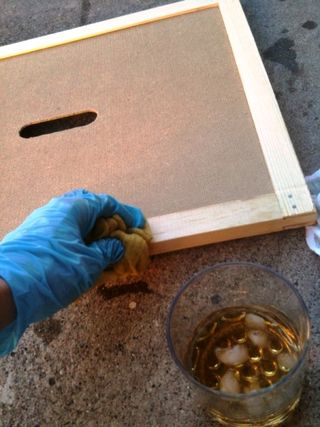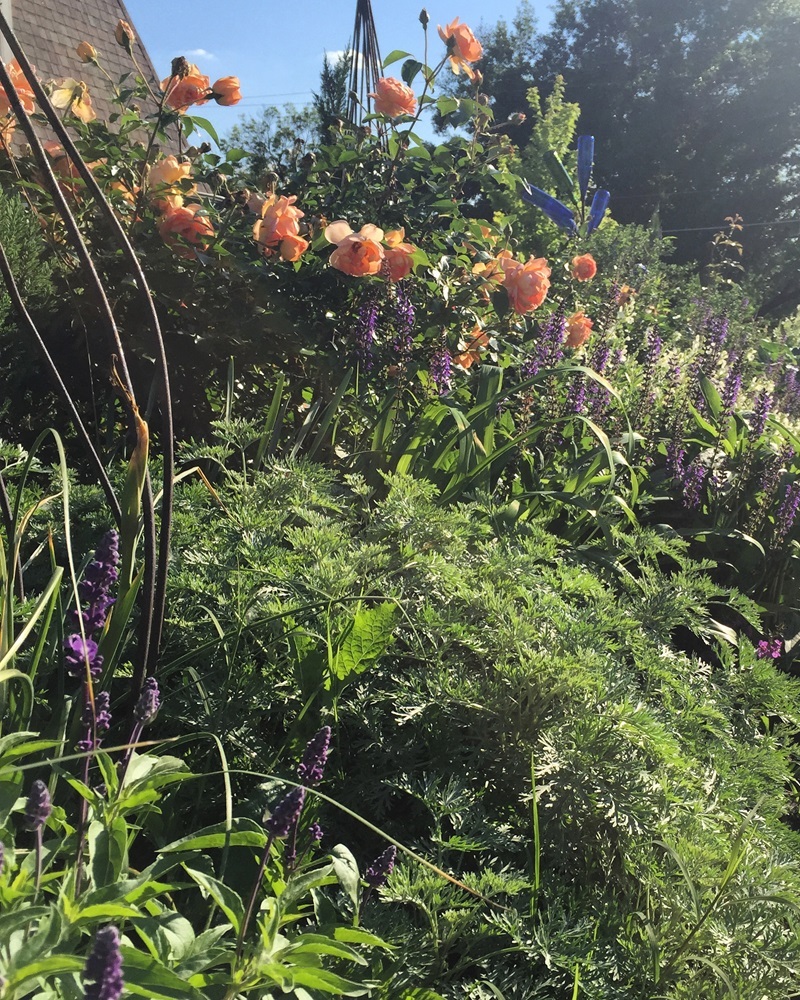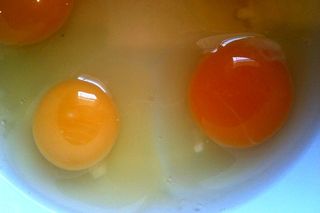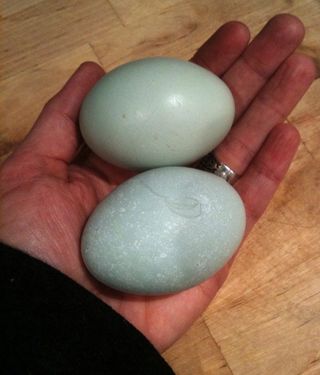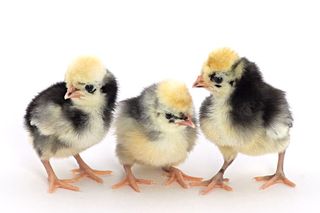Planting New Fruit Trees
March 15, 2011
Welcome to Fruitopia!
Sunday was project day in the home garden...With help from some of my guys, I managed to get the side yard, officially re-named "Fruitopia", cleared. We also planted a number of fruit trees and blackberry plants. Fruitopia is where my two beehives will reside as of next month and it should be the perfect spot for them.
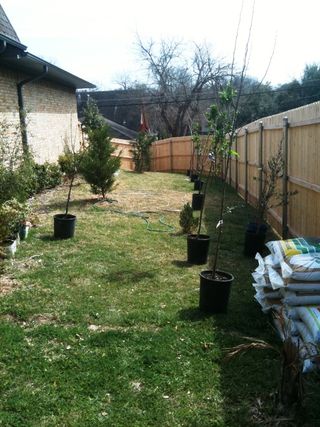
The before shot above: There was a very old Ligustrum hedge planted along the foundation. These plants had probably been established for a good 40 years. While they'd been cut number of times, the trunks were huge. It took about half the day to get them out. The owners that remodeled the house and sold it to us planted a ridiculous assortment of random shrubs and many Leyland Cypress around the house, without amending any foundation beds. We pulled all of them out. They are sitting in pots and up for grabs right now, lol.
We amended the foundation bed with compost and expanded shale, although I didn't use too much because I'm establishing blackberries down the entire bed. They usually don't require as much prep as ornamental plantings. There are about 14 blackberries between the varieties 'Navaho', 'Quachita', 'Brazos' and one other....can't remember off the top of my head. Blackberry heaven! I also planted a Pomegranate 'Wonderful' down at the end of the bed on the South side, although you can' really see it in the photo. That South corner is where the beehives will go. Eventually, I'll also build some pathways and plant a few more ornamental bloomers in there just to pretty it up. But it is a production space.
The fruit trees we planted are:
'Santa Rosa' Plum
'Ayers' Pear on dwarf root stock
'Holland' Apple
'Dwarf Redskin' Peach
'Dwarf Ranger' Peach
'Brown Turkey' Fig
I also have a dwarf fruiting Cherry called 'Dwarf North Star', but I'm going to put that one in a large container on the South side of the back yard. It will only get 8'-10' feet so I don't want it shaded out by the other fruit trees. I plan to prune all of the trees to keep them more compact, but still planted the larger varieties to the North side, staggered down the the shortest variety (the 10' fig) on the South side to avoid shading.
We also ripped up all the randomly planted shrubs around the front of the house. There was no rhyme or reason to what was planted and none of the soil was amended. There were volunteer junipers growing right in front of the windows...even a "pruned" red oak growing right under the roof line. It was basically a hot mess! So now it just looks a little sad and empty, but better than the mess that was there before. There was an original grape vine in the front...I left that to see what it does. Might trellis it over the window.
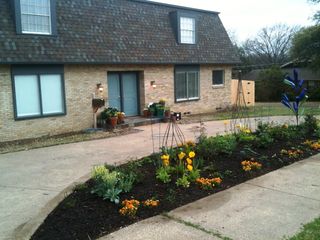
Eventually, I will build burm foundation beds all around the front of the house, property and the back yard...but the next project is to rework a ton of the irrigation first. We did some of that on Sunday, but things have to be moved, repaired and rezoned. Can't build new beds till that work is completed. So..sad and empty it is, lol. I did do some extra planting in the front sidewalk bed. The herbs, chard, spinach and Iceland poppies are looking pretty right now. There are baby strawberries coming as well. I added some 'Pat Austin' and 'Easy Does It' roses, some new Echinacea varieties and a few tomato plants. Pulled weeds...and mulched.

